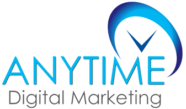
Last Updated on abril 4, 2025 by anytimedigital
Understanding Tariffs and Their Economic Impact
What Are Tariffs?
The Relationship Between Tariffs and Inflation
If tariffs increase the costs of goods, the resulting higher prices can contribute to inflation, affecting consumer behavior and spending power. As the purchasing power of your target audience declines, you may notice a shift in how consumers prioritize spending. In times of inflation driven by tariffs, your marketing strategy may need to pivot. Instead of solely focusing on attracting new customers, it becomes vital to maintain loyalty among your existing customer base, which can be more cost-effective and yield better returns during uncertain economic conditions.
How Tariffs Affect Consumer Behavior
Shifts in Spending Patterns
The Importance of Brand Loyalty
With consumers becoming increasingly selective about their purchases, brand loyalty plays an necessary role in navigating the effects of tariffs. In uncertain economic conditions, retaining existing customers is often more cost-effective than acquiring new ones. When you prioritize brand loyalty, your customers are more likely to stick with you, even when faced with higher prices. Investing in building strong relationships through effective communication and quality service can keep your audience engaged and willing to pay a premium for your brand.
Tips for Adjusting Your Digital Marketing Budget
- Reduce spending on high-cost paid ads while increasing investment in organic channels.
- Consolidate your marketing efforts to focus on areas that provide the highest return.
- Explore cost-sharing partnerships with complementary brands to expand your reach.
- Enhance your email marketing efforts, as they offer a high ROI and low cost.
Prioritizing Cost-Effective Channels
Leveraging Analytics for Strategic Decisions
Some business owners might not fully use data analytics to inform their marketing choices, precisely when a data-driven approach could yield significant insights. In the current economic climate, understanding your audience better can help you allocate your budget efficiently and identify which channels are generating the best results. By continuously monitoring engagement metrics and conversion rates, you can pivot your strategy in real-time to respond to shifts in customer behavior.
How to Optimize Paid Advertising in a Tariff Environment
Focus on Targeting and Retargeting
Retargeting is an crucial tactic in a tariff-impacted advertising strategy, allowing you to engage potential customers who have previously expressed interest in your products or services. By honing in on users who have already interacted with your brand, you can significantly boost conversion rates without the higher costs associated with reaching entirely new audiences. Utilize advanced targeting capabilities available on platforms like Google Ads and Facebook to create personalized ads that resonate with users who are already familiar with your offerings.
Exploring Alternative Advertising Platforms
Some business owners might overlook lesser-known advertising platforms that can offer cost-effective options in a tariff environment. While giants like Google and Facebook dominate the market, platforms such as LinkedIn, TikTok, or even niche community websites can provide unique opportunities to reach your target audience without incurring the high costs often associated with traditional paid channels. These alternatives can help you diversify your advertising strategy and reduce reliance on any single platform, leading to better overall performance.
SEO Strategies for Competitive Advantage
Keyword Research in a Changing Market
Building Authority and Trust
Research indicates that consumers are more likely to engage with brands they consider trustworthy, which becomes increasingly important in uncertain economic times. You can enhance your credibility by focusing on producing high-quality, informative content that addresses the needs and concerns of your target audience. Engaging in online communities, guest posting on reputable sites, and earning backlinks from established sources can all contribute to building your online authority. Each of these tactics not only improves your search rankings but also fosters brand loyalty among current and potential customers.
Measuring Returns on Marketing Investment
Key Performance Indicators to Track
Adjusting Strategies Based on Data Insights
With the data you’ve collected, it’s vital to be adaptable. What works today may not work as effectively tomorrow, especially as market conditions evolve. Regularly analyze your KPIs and be prepared to pivot your strategies based on what the data tells you. If email marketing demonstrates a higher ROMI than paid advertising, invest more heavily in that area. Alternatively, if certain segments of your audience respond well to retargeting efforts, amplify those campaigns to retain momentum. This responsive approach allows you to embrace the fluidity of the marketplace without losing focus on your overarching business goals.
Final Words
Considering all points discussed, it’s clear that tariffs can significantly influence your digital marketing strategy in 2025. As you navigate the complexities of increased costs and changing market conditions, it’s imperative to reassess your marketing priorities. You may need to focus on cost-effective methods like SEO and email marketing to maintain visibility without stretching your budget too thin. Keeping your finger on the pulse of your industry and adjusting your strategies accordingly can help you not only survive but thrive amidst economic fluctuations.

